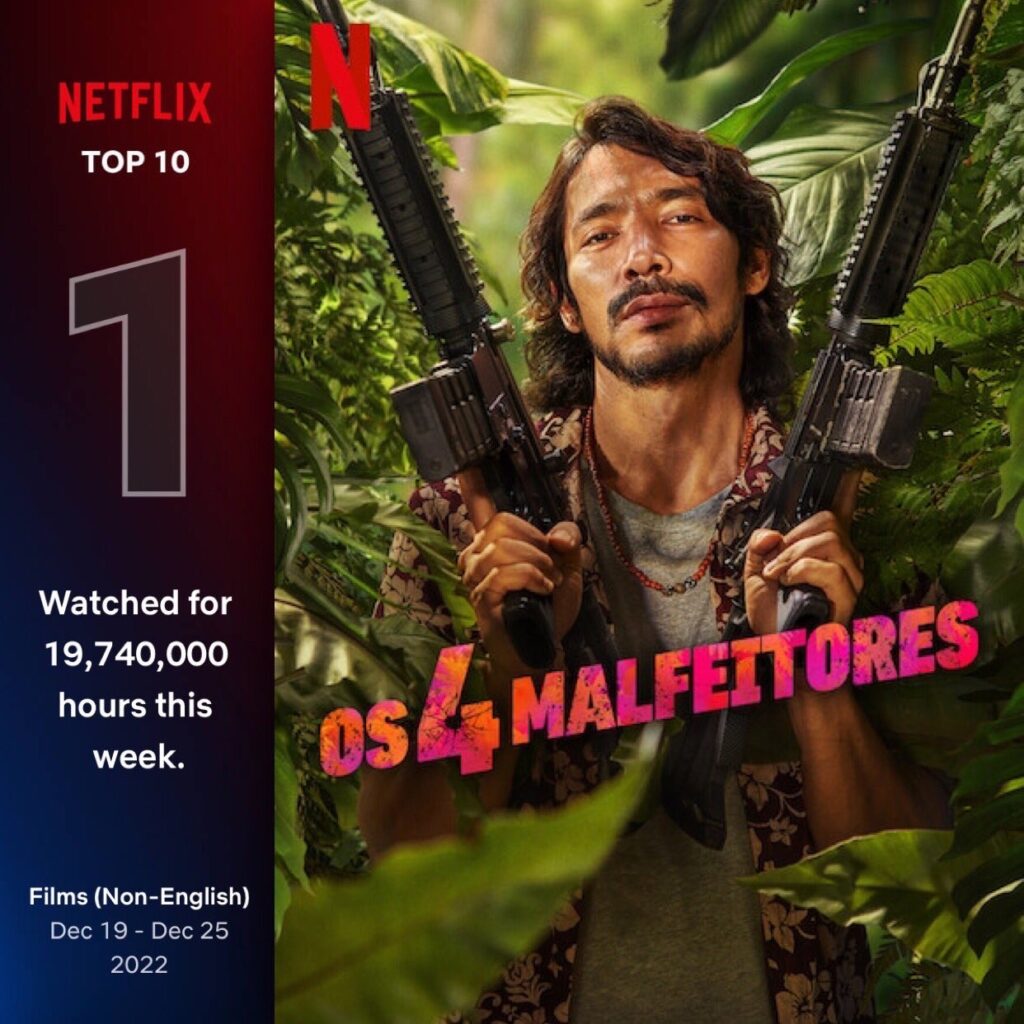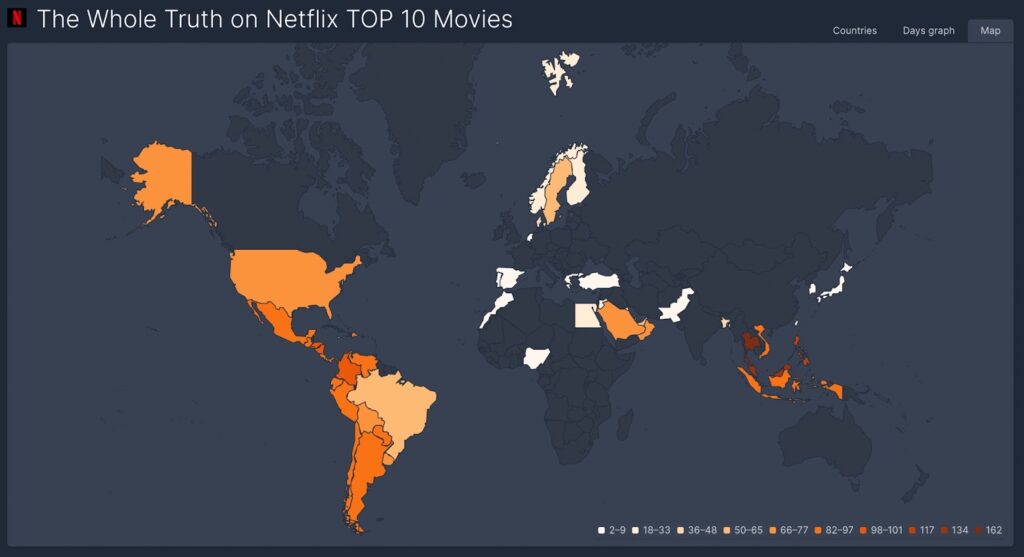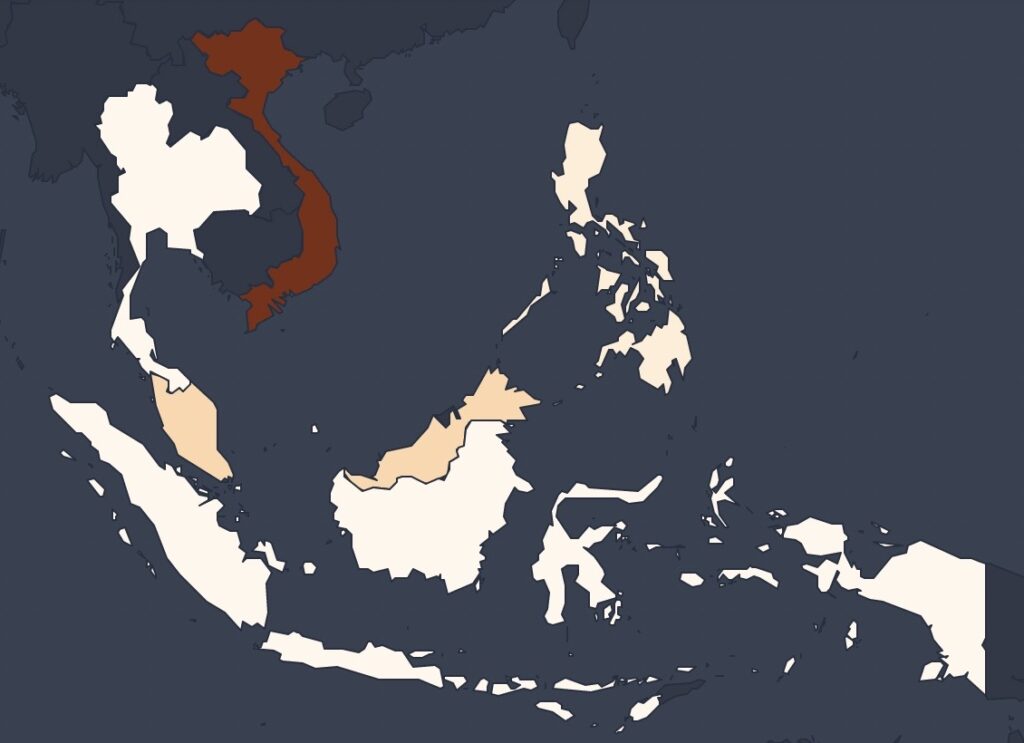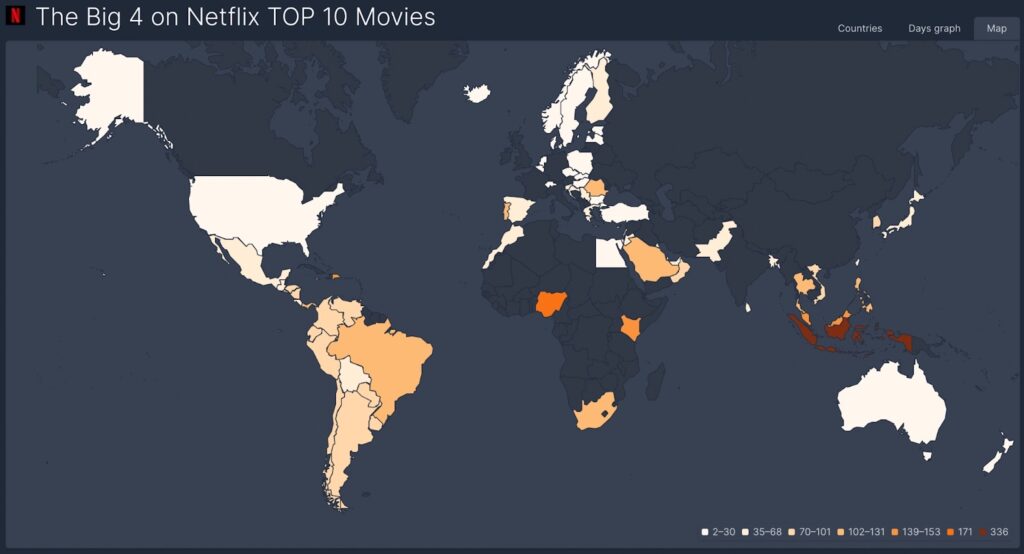With the growing market and fast-paced competition, Netflix continues to pave its way to the top in Southeast Asia. This study unpacks Netflix’s relevancy amidst its competition and showcases its strategies against regional rivals through localization and tap into local potency/efficacy.
Why localization matters
Localization is essential to Netflix’s strategy because it allows the company to tailor its content and user experience to specific regions and cultures. This helps attract and retain customers in those areas and increases engagement and satisfaction.
One fundamental way that Netflix localizes its content is by creating original programming in different languages and with diverse casts and storylines. This strategy has been particularly successful in countries like Brazil, Mexico, and India, where local productions like “3%,” “Narcos,” and “Sacred Games” have become major hits. By producing content that resonates with local audiences, Netflix has built a solid and loyal customer base in these countries.
In addition to creating localized content, Netflix also adapts its user interface and features to different regions. For example, the company has added support for more languages and local payment methods, featuring local content more prominently in its recommendations and search results. These efforts help create a more personalized and seamless experience for customers, which can lead to increased engagement and retention.
Localization is crucial to Netflix’s growth strategy as it helps the company better connect with customers in different regions and cultures. By creating original programming, adapting user interface and features, and providing a personalized experience, Netflix further strengthens its customer base and increases its users across the region.
Localization in Southeast Asia
The importance of localizing content in Southeast Asia cannot be overstated, as it plays a vital role in empowering local voices and representing underrepresented communities. In many Southeast Asian countries, the media and entertainment industry is dominated by a small number of big players, which often results in a lack of diversity in shared stories and perspectives. By producing and promoting localized content, streaming platforms like Netflix can help to fill this gap by giving a platform to underrepresented voices and stories.
For instance, by commissioning and showcasing local productions that tell stories from different cultures, religions, socioeconomic backgrounds, and even the LGBTQ+ community, streaming platforms can help to ensure that all Southeast Asian viewers have access to content that reflects their own experiences and identities. This can empower individuals from these communities and help promote greater understanding and acceptance among all viewers.
Netflix’s localization strategy and commitment to bringing and amplifying local stories to the rest of the world are reflected through various workshops that have been held, such as writing workshops for 23 creators from Singapore, Thailand and Indonesia, writing the script for a television series in Indonesia; and short film camp for directors and producers from Thailand, Cambodia, Laos and Myanmar.
Furthermore, localization content in Southeast Asia can also play a role in promoting the local culture and tradition. Many narratives and histories from the region have yet to be widely shared or well-known, but showcasing these in movies or series can help preserve and promote the region’s diversity.
In short, localization content in Southeast Asia is important because it empowers local voices and represents underrepresented communities. It promotes diversity in shared stories and perspectives and helps preserve and promote the culture and tradition of the region. Streaming platforms like Netflix can play a significant role by commissioning and promoting localized content.
Local Content champions in the Region
In fact, research has shown that streaming platforms with a more extensive selection of local content tend to have more subscribers in Southeast Asia. For example, a study found that in Indonesia, streaming services with a significant amount of local content had a higher number of subscribers than those without; a case of Vidio, the local streaming service in Indonesia (you might read it in our previous piece here).
Recently, “The Big 4”, an Indonesian film directed by Timo Tjahjanto, kicked off big time. Domestically ranking first on the Top 10 Films in Indonesia, the film also received international acclaim by being in the Top 10 Films in the US and on the Top 10 Netflix Movies in 79 countries with total cumulative hours watched for 41,570,000 hours in 3 weeks (12 Dec 2022 – 1 Jan 2023).
Source: Flixpatrol

This achievement again proves how local content that focuses on its quality and stays true to the local base will thrive on a bigger stage and audience. This is a good sign for Waktu Netflix Indonesia, a slate of upcoming made-in-Indonesia films and series with a wide range of genres, to kick off their plan until 2024. This study unpacks Netflix’s relevancy amidst its competition and showcases its strategies against regional rivals through localization and tap into local potency
Thailand has a notable history of producing successful content, particularly within the horror genre. A prime example of this is the supernatural thriller film “The Whole Truth”, which spent five weeks in the top 10 list of non-English films globally and also ranked in the top 10 in 35 countries. Netflix Thailand recently unveiled an exciting lineup of six new Thai movies and series that are directed by renowned creators and feature well-known Thai actors. The titles are the most diverse yet, including a range of genres such as broad comedy and intricate thrillers. This slate includes four films and two series.

Source: Flixpatrol
Southeast Asians Love for Horror Content
If there is one thing Southeast Asians have in common, they all seem to love local horror stories. In fact, Vivien Tan, Netflix’s Publicist in Southeast Asia, wrote that the appetite for this fright-filled fare is going strong as the next wave of horror content emerges from Southeast Asia. In the APAC region, viewership of horror content on Netflix grew 20% from 2020 to 2021. Over the same period, viewing hours of horror content in Southeast Asia increased by over 40%.
This means that local horror content or stories are in high demand, and streaming platforms are more than ready to develop and produce their own local horror stories. Netflix, for example, has the anthology series “School Tales the Series,” created by six Thai directors, which features eight haunting ghost stories set in educational institutions. During its first week of release on Netflix, the series quickly became one of the Top 10 most-watched TV series in four Southeast Asian countries: Thailand, Indonesia, Malaysia, and Vietnam. Another Thai production, “The Whole Truth” (2021), achieved significant global success by ranking among the Top 10 Movies in 54 countries.
From Vietnam, The Ancestral (2021) also entered the Top 10 Movies list in Indonesia, Malaysia, Philippines, Singapore, Thailand, and, of course, Vietnam proving that local horror stories from Southeast Asia will always have a special place for Southeast Asians.
In short, localization can attract new audiences in Southeast Asia by providing content that resonates with regional viewers. Based on what we’ve gathered, it also proves that local productions can successfully attract new audiences and that platforms with a more extensive selection of local content tend to have more subscribers in Southeast Asia.

Source: Flixpatrol
The Future of Local Content in Southeast Asia
The future of local content in Southeast Asia looks promising, particularly in the subscription-based video-on-demand (SVOD) industry. As internet access and streaming technology continue to improve in the region, the demand for local content is expected to grow.
One of the main drivers of this growth is the increasing purchasing power of consumers in Southeast Asia. As incomes rise and more people can afford streaming services, they become more interested in consuming diverse content. This is particularly true for younger audiences, who are more likely to be digitally savvy and have a strong interest in local productions.
Another factor driving the growth of local content in Southeast Asia is the increasing competition among streaming platforms. With the entry of new players such as Prime Video, Disney+ and Apple TV, existing streaming platforms like Netflix are under pressure to attract and retain customers by producing more localized content.
In addition, the variety of content and the diversity of culture in Southeast Asia is also positive sign for the future of local content. There are many different languages and cultures in the region, which provides a wide range of stories and perspectives to be shared.
In summary, the future of local content in Southeast Asia looks bright. Evidently, streaming platforms like Netflix will continue investing in localized content to attract and retain customers, leading to more stories, perspectives and entertainment from Southeast Asia.
Related Posts
13.10.2020
50 Ideas to Diversify Your Content Marketing Strategy
How can we as brands talk about the same things on social media but in a way…
06.03.2020
The Future of Content Marketing | Podcast S02E07
In the blink of an eye, we now find ourselves in the year 2020. In this…





